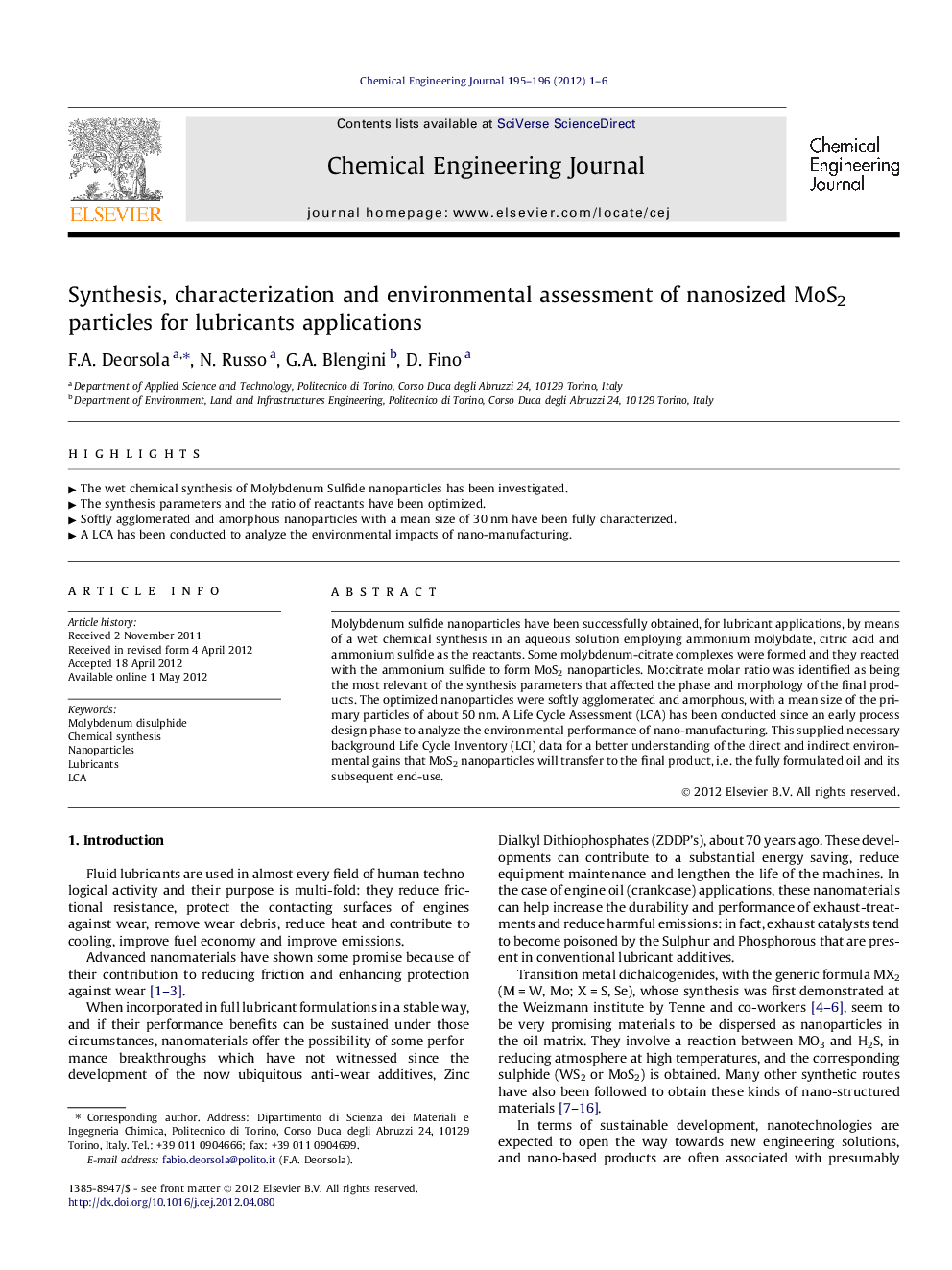| Article ID | Journal | Published Year | Pages | File Type |
|---|---|---|---|---|
| 149772 | Chemical Engineering Journal | 2012 | 6 Pages |
Molybdenum sulfide nanoparticles have been successfully obtained, for lubricant applications, by means of a wet chemical synthesis in an aqueous solution employing ammonium molybdate, citric acid and ammonium sulfide as the reactants. Some molybdenum-citrate complexes were formed and they reacted with the ammonium sulfide to form MoS2 nanoparticles. Mo:citrate molar ratio was identified as being the most relevant of the synthesis parameters that affected the phase and morphology of the final products. The optimized nanoparticles were softly agglomerated and amorphous, with a mean size of the primary particles of about 50 nm. A Life Cycle Assessment (LCA) has been conducted since an early process design phase to analyze the environmental performance of nano-manufacturing. This supplied necessary background Life Cycle Inventory (LCI) data for a better understanding of the direct and indirect environmental gains that MoS2 nanoparticles will transfer to the final product, i.e. the fully formulated oil and its subsequent end-use.
► The wet chemical synthesis of Molybdenum Sulfide nanoparticles has been investigated. ► The synthesis parameters and the ratio of reactants have been optimized. ► Softly agglomerated and amorphous nanoparticles with a mean size of 30 nm have been fully characterized. ► A LCA has been conducted to analyze the environmental impacts of nano-manufacturing.
